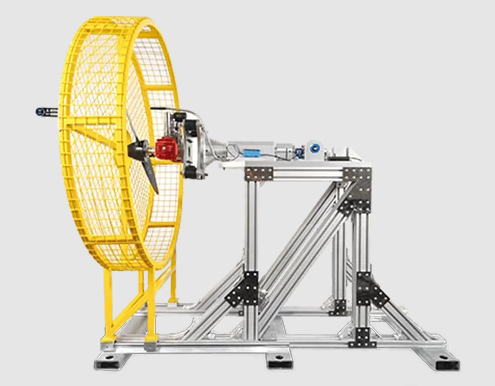An engine test bench is a facility used to develop, characterize and test engines. The facility allows the engine to operate in different operating states and provides measurements of multiple physical variables associated with engine operation. A sophisticated engine test bench is equipped with multiple sensors (or transducers), data acquisition functions, and actuators to control the engine state.

The sensors will measure several physical variables of interest, typically including.
Crankshaft torque and angular velocity.
Intake and fuel consumption rates, typically detected using volumetric or gravimetric methods.
Air-fuel ratio of the intake mixture, typically detected using an exhaust gas oxygen sensor.
Exhaust gas concentrations of environmental pollutants such as carbon monoxide, hydrocarbons and nitrogen oxides in different configurations, sulfur dioxide and particulate matter.
Temperature and air pressure at multiple locations on the engine body, such as engine oil temperature, spark plug temperature, exhaust gas temperature, intake manifold pressure.
Atmospheric conditions, such as temperature, pressure and humidity.
Typical Tests Include
Determining durability: aging tests, oil and lubrication tests
Determining compliance with relevant emissions regulations: volumetric and mass emissions testing during the required emissions test cycle
Further underbenching of the engine itself: engine mapping exercises or development of multi-dimensional input-output diagrams between different engine variables.
For more information, please click here. We will provide professional answers.
